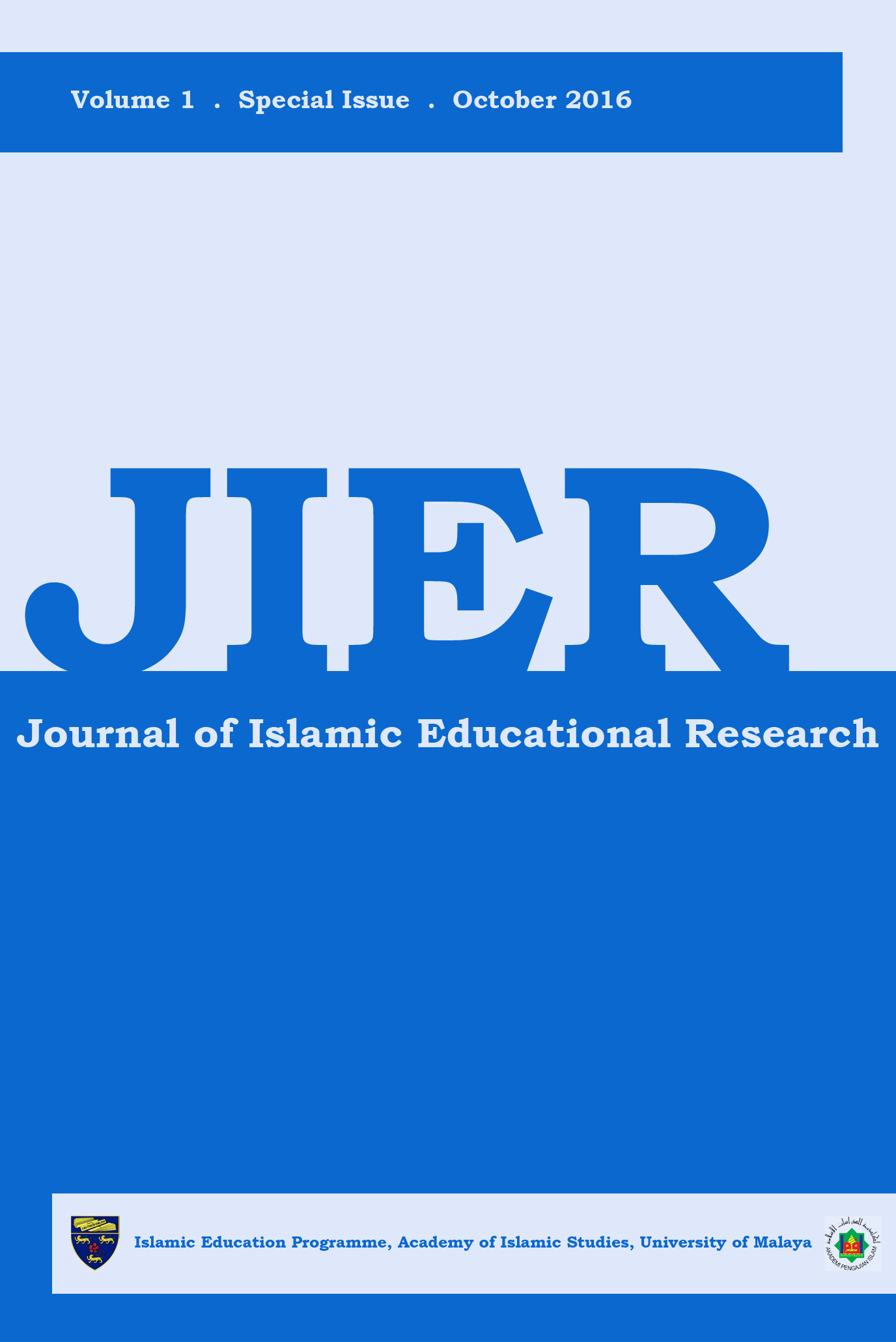AMALAN PENGAJARAN PENSYARAH TAHFIZ AL-QURAN DI MALAYSIA
TEACHING PRACTICE AMONG TAHFIZ AL-QURAN LECTURER IN MALAYSIA
DOI:
https://doi.org/10.22452/jier.sp2016no1.2Keywords:
Teaching Practice, Lecturer, Tahfiz al-QuranAbstract
This study was aimed to unveil the perception of lecturers and employers of the lecturers’ teaching practices at Malaysia Tahfiz al-Quran Institution or "Maahad Tahfiz al-Quran Malaysia". This study involved 177 lecturers as samples, and 6 employers from selected maahad tahfiz. To achieve the study’s objective, a set of questionnaires with 10 items was used as an instrument to measure the lecturer’s perception towards teaching practice, while a semi-structured interviews containing 3 questions were used to obtain the views of employers regarding their role. The findings from questionnaire were analyzed descriptively and show as a whole, the level of lecturer’s teaching practice is moderate, with the mean value of 3.69. On the other hand, the results of interviews show that there is a difference in opinion between lecturers and employers in the aspect of diversifying the methods of teaching. Meanwhile the results of the study disclose a significant difference in the level of teaching practices of lecturers, based on academic qualifications, where lecturers holding degrees and higher level will lead to a higher perception (mean=3.74). The implication of this study concludes that teaching practices of lecturers should be enhanced in order to excel the al-Quran memorization education in Malaysia.
Downloads
Downloads
Published
How to Cite
Issue
Section
License
The published manuscript shall be a copyright of the Islamic Education Programme, Academy of Islamic Studies, University of Malaya, Kuala Lumpur, Malaysia. The published manuscript would not represent the stand or opinion of the Advisory Board, Editorial Board, Co-Editorial Board and the Management Team of Journal of Islamic Educational Research (JIER), or the Islamic Education Programme, Academy of Islamic Studies, University of Malaya.
Note: This is an open access journal which means that all content is freely available without charge to the user or his/her institution. Users are allowed to read, download, copy, distribute, print, search, or link to the full texts of the articles in this journal without asking prior permission from the publisher or the author. This is in accordance with the BOAI definition of open access.


